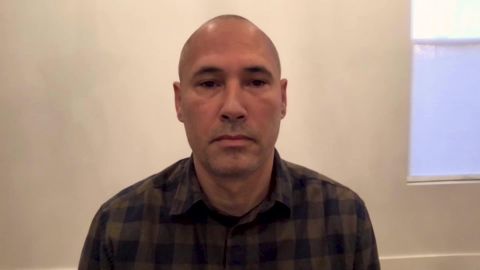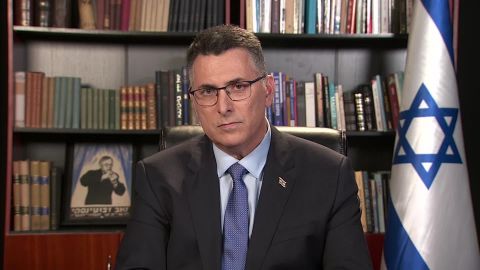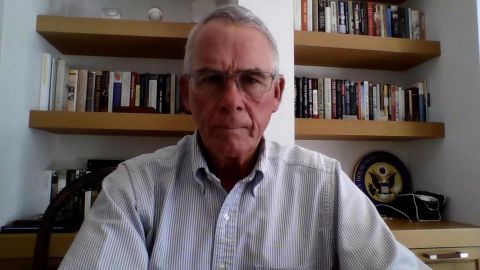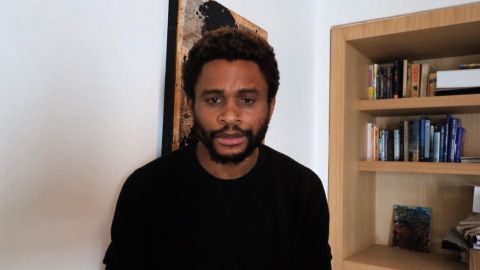Read Transcript EXPAND
CHRISTIANE AMANPOUR: Now, hundreds of thousands of security forces are bracing for impact. Investigative reporter for ProPublica, A.C. Thompson has been tracking far-right movements for years. And here he is, speaking to our Hari Sreenivasan, about which groups were at that capital riot, and what to look out for in future.
HARI SREENIVASAN, SENIOR CORRESPONDENT, PBS NEWSHOUR: Christiane, thanks. A.C. thanks for joining us. Layout, if you will, the Venn diagram of all the different groups that were there. Because we know that this wasn’t one homogeneous group of either Trump supporters or whatever we would call the far right.
ADAM CLAY THOMPSON, INVESTIGATIVE REPORTER, PROPUBLICA: Right. So, it is really interesting. What you see is we see a sort of unaffiliated mass of very hardcore Trump supporters, of people that support the MAGA, Make America Great Again movement. But then, you see specific entities. And a key entity, I would say, would be the proud voice, which is the sort of ultra-nationalist street fighting group that has emerged in the last few years were a big part of this. The different militia groups like the Oath Keepers and Three Percenters were on scene, and they played a key role. QAnon supporters, people of the conspiracy theory about around the president, and Joe Biden were there. There was a contingent of boogaloo boys there as well, who are an armed group who believe in the overthrow of the U.S. government. And then, there were some white nationalists and white supremacist outfits as well. So, it was a big collection of these different groups, many of whom have different ideologies and interests. And then, a sort of buffer of kind of average Trump supporters.
SREENIVASAN: How do their interests all overlap? How do they all set aside whatever their differences might be for a shared goal?
THOMPSON: The key thing for so many people is this belief that the election was fraudulent, that Donald Trump is the rightful president going forward, that he should have been re-elected, that he really was re-elected, if not for massive fraud. And that what we’re seeing is basically, the end of democracy. And so, that’s a really motivating force for people. If you believe that, then you will go do intense and extreme things, and I think that’s what is the uniting force there. Some of these groups, you know, would like to see basically a white homeland, a white U.S. cleansed of people of color. Some of these groups are hardcore anti-immigration and anti-Muslim. They have different sort of key ideas. But Trump is a uniter for them, and he has built this broad tent of pretty fringe characters over the last four years.
SREENIVASAN: Now, you have been going to so many of these militia rallies, these stop to steal rallies, you’re working on a film for frontline that’s going to come out in the spring. But when you are able to spot, for example, a group of what looks like a military group walking right up the steps of the Capitol, kind of snaking through the crowd there, how did you identify who they were?
THOMPSON: You know, so, working with my colleague, Ford Fischer, who is a videographer, he was filming for us, and films at all these events as well, we went through that footage. We looked at the insignias that were on the body armor, and on the clothing that these guys were wearing. And we’ve seen them at previous rallies. The thing with the militia guys, the Oath Keepers, is they were broadcasting their organization with Oath Keeper patches on their gear. The Proud Boys took a different tack. We’ve seen them at a lot of rallies over the past three years and usually they go out in very clear uniforms, yellow and gold — or gold and black are their colors. They always wear the same kind of uniform. This time they didn’t do that. They wore black. A lot of them wore orange beanies or had a little piece of orange duct tape affixed to their gear but they weren’t broadcasting their membership in that group. So, it took more work to sort of figure out that they were deeply involved. And Vice News is one of the outlets that has really looked at them as a news organization and figured out their role in all this.
SREENIVASAN: This subset of white supremacists, white nationalists, the Department of Homeland Security has said, the FBI has said over the past year, that this is our — one of our primary concerns for domestic terrorism, that that’s something the entire country should be on watch for. So, I think a lot of people are wondering how is it that these groups were able to organize and show up on January 6th without triggering all the alarms you would think the federal government has in place?
THOMPSON: Yes. So, that is a key question. That’s going to be part of the post mortem that is going on for months into the future. How did this happen? What were the intelligence failures? Where do we see the breakdown in law enforcement responsibility between Homeland Security, the FBI, the D.C. Metro Police, the Capitol Police? Where does the culpability really lie? Now, I’ll tell you this. In the months and weeks before the election, the FBI was incredibly active. They were at — a lot of white supremacist extremist and antigovernment extremists, and they were very, very diligent. So, my general sense is that they’re in these chat rooms. They’re on the dark web. They’re getting human sources into these groups. On that end, you’re seeing a lot of activity. My question is, is that law enforcement activity being translated over to local law enforcement agencies or law enforcement agencies like the Capitol Police and are they acting on that information?
SREENIVASAN: What is the connection between these groups and the president? When we watched the debate and when the president had an opportunity to disavow white supremacists on stage instead of saying whatever he wanted to he said, stand back and stand by. And there was a lot made about that phrase at the time. Did these groups perceive or do they think the president supports them?
THOMPSON: Yes. Yes. They do. And for the Proud Boys are reporting shows, and that was the group he sort of gave a shout out to during the debate, that they have had a massive explosion in membership since then. That that mention actually has been a huge driver in their recruitment. But if you go through the hardcore white supremacist movement, if you go to the anti-immigrant movement, if you go to groups like the Proud Boys, they have believed for years that Trump is on their side. And if he doesn’t always signal his complete support for them, well that is something he’s being forced to do and he kind of has to not always embrace their politics but they believe that he is a fellow traveler. He is a supporter.
SREENIVASAN: So, let’s talk a little bit about the police, on kind of two fronts, one is we saw a police force that was physically overwhelmed by the number of people that were trying to enter the capitol. Some of them seemed, for lack of a better term, complicit. They seemed to just open the gates or open the doors. And others fought as much as they could to try to stop this from happening, right? But when you see how police handled the events in Charlottesville, how they handled the events here, what sticks out to you?
THOMPSON: Well, I’ll tell you this. The D.C. Metropolitan Police have been very impressive and have been very professional throughout the fall and into this year with their ability to manage protest crowds without harming the protesters and while allowing them to exercise their First Amendment rights. And so, I think we’ve seen a high level of sophistication, professionalism out of the local police here in D.C.
SREENIVASAN: D.C. is a protest town.
THOMPSON: It is a protest town. This is what they do. That’s why it was strange to see such a lack of preparation apparently and lack of sophistication on the part of the capitol police. They deal with protests all the time, too. And it was a stark contrast to what we’ve personally witnessed and filmed with the Metropolitan Police.
SREENIVASAN: When you — you know, there was a lot of pushback after this saying how much of this has to do with the race of the people that were rioting, protesting, whatever you want to call it because our preparedness, our stance seemed so different over the summer for the Black Lives Matter movement.
THOMPSON: That is going to be a key question going forward. We interviewed Rep. Andre Carson who is a congressman from the Indianapolis area who is African-American rep and he said to us, he said, I am worried that there are empathizers and sympathizers with this Trump movement and some of the more extreme elements of it who were working in the ranks of the capitol police that day. That is a legitimate concern that I have and it’s something we’re going to find out about. I think when we’ve seen police officers from around the country who showed up at the event, that is a concern. I think that when we see police leaders and sheriff’s deputies and sheriffs signal their support for the event, I think that is a concern. So, that sort of concern that there is a current of this extremism in police and in law enforcement and may have been at the capitol. And when you see some of these videos of the doors kind of being flung open for the rioters, it’s hard not to think there was some sort of sympathizing. That is a very deep concern.
SREENIVASAN: You saw now identified a former navy seal. You saw several ex- military. But there were also members of police departments from different parts of the country who drove in and took part in this.
THOMPSON: Right. So, we know that there was, you know, a police officer from Oakland, California, for example. We than the police union leader in Chicago signaled his support quite vocally for the event. We know that there are sheriffs from around the country and sheriff’s deputies who have been involved in the movement and said, hey, nothing wrong happened that day. And so, that is a worrisome thing here. I think, you know, fundamentally, sitting underneath all of this is this nearly cult-like admiration for Donald Trump. And this belief that if he says the election was fraudulent, the election was stolen, I have been deprived of my rightful place as your president for the second term, these people are acting on that repeated and constant messaging. And they are so skeptical of the so-called mainstream media or of traditional news sources that when you tell them, hey, you know, all the reporting, all the audits, all the recounts show there wasn’t any real significant fraud. That is not something they want to believe. It just is not something they believe. It does not enter into their minds. And so, they feel motivated in a nearly religious way to take these actions.
SREENIVASAN: So is there — you know, a lot of times the conservative movement in the country throughout the past year or the last few years of protests and so forth, if there was ever going to be a confrontation between some of these groups and police, it seemed like it would stop because this was either the Republican Party that was the party of law and order or the president has repeatedly said he is for law and order. Is that changing?
THOMPSON: Yes, that’s a great question. That is actually something we’ve been exploring with our film. Because when we were going to protests a few months ago, you would see these confrontations and you would see the Proud Boys or other groups get right up to the police line and they would want to engage physically with the police. And then they would say, we’re not going to do that. We support the police. We love you guys. We back the blue. And it would stop. But what you’ve seen week after week is that support for the police, that sort of idea that we are the pro police forces, is diminishing. And it’s gone now. It’s gone. And what you see now is a sense that the police are complicit in this vast depth of the election, which we know is a fraudulent — that we know is not true, we know the election wasn’t stolen, but there is a perception amongst many of these groups the election was stolen, the police at all levels have become complicit with this theft. And now, we are turning on them. We are turning on the federal government. And for a lot them, they’re even turning on the GOP and the Republicans and saying, you didn’t have our back when we went into the capitol. We’re done with you. We are just going to be at war with the government until we save our democracy.
SREENIVASAN: Wow. So, that idea that we are with the police if that was the thing that was stopping full scale attacks and if that’s gone, that does not bode well for whatever is coming.
THOMPSON: My concern is that the law-and-order portion of the far-right is now sort of gravitating toward the really militant antigovernment seen within the far-right, which was smaller. And that now what you may see is a much broader very hardcore antigovernment movement that is willing to use force to go after public officials, that is willing to use force to take over state houses and other government buildings and that believes that the use of bombs and other terrorist tactics are justified.
SREENIVASAN: You’ve been going to a lot of these marches and rallies for more than a year now. You’ve been investigating the space for several years. What happened on the 6th caught a lot of Americans by surprise but there have actually been protests like this at state capitols throughout the year.
THOMPSON: Yes. The thing that you see, when you look back at 2020 and you bring it up to January 6th is that you see this was something that was building over months. You start with January 2020 in Virginia and you had 20,000-armed people show up at the Virginia State House. They did not enter the state house. No one was hurt. But that was a quite menacing show of force. You can look at other events that happened throughout the year. The Idaho State House in Boise was stormed. The Oregon State House in Salem was stormed. There was a whole group of armed men who went into the state capitol in Michigan while legislators were there. These men all — almost all of them had AR-15 rifles and really, really scared the state lawmakers. And then there was the plot to kidnap Governor Gretchen Whitmer, that the FBI alleges in Michigan. And there have been so many threats against elections officials, public health officials, other state leaders and local leaders. We have seen an unprecedented wave of militant, antigovernment action over 12 months. And I worry that that is not ending and particularly at state and local level, we will see a lot more public leaders targeted.
SREENIVASAN: What happens in the Biden administration? I mean, on the one hand you’re going to have a president who is not going to be saying stand back and stand by or give tacit permission. On the other hand, you have a president who faces a massive threat by a number of people who find him illegitimate.
THOMPSON: Right. I talked to a far-right leader yesterday and I posed that question to him. And he said, you know, I think it’s possible that people just go home. And they go back to their jobs. And they’re angry but they don’t do anything. He said, now, if we see hardcore gun restrictions coming down, if we see gun control laws coming that are significant, he said, at that point, I think you will see more resistance. But he also said, I can’t predict. And this was a person who associated with Tim McVeigh, the Oklahoma City bomber, was part of the militia when Tim McVeigh was around. He said, so, it’s always possible that someone will go out and take that sort of drastic action. It is really hard to predict. But I think we have to be — we want to be vigilant but not paranoid over the next year for the potential for a real, dramatic attack on the federal government.
SREENIVASAN: A.C. Thompson of “Pro Publica” also working on a film for frontline about this very topic, thanks so much for joining us.
THOMPSON: Thank you, Hari.
About This Episode EXPAND
Former Congressman Francis Rooney discusses impeachment and next week’s inauguration. Israeli politican Gideon Saar explains why he doesn’t think Prime Minister Benjamin Netanyahu Netanyahu will be able to unite the nation in the upcoming election. ProPublica reporter AC Thompson analyzes the rise of far right groups across the U.S. Actor Nnamdi Asomugha discusses his new film “Sylvie’s Love.”
LEARN MORE



